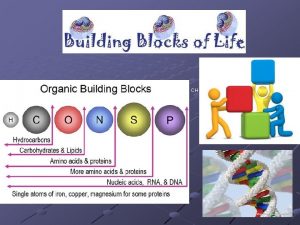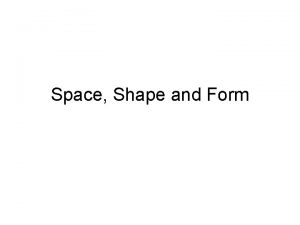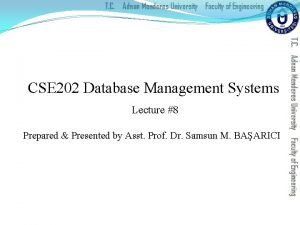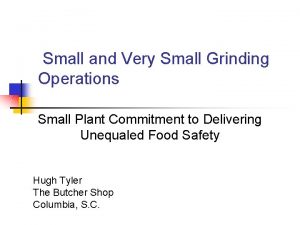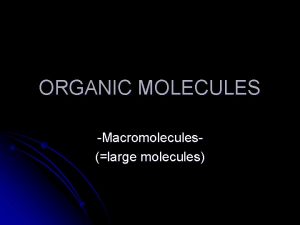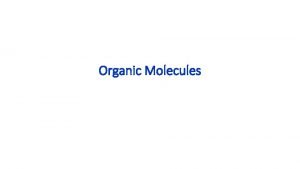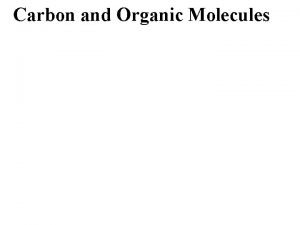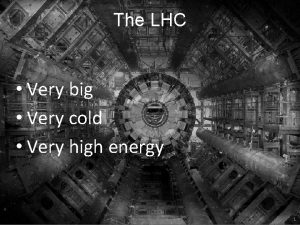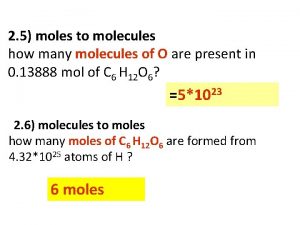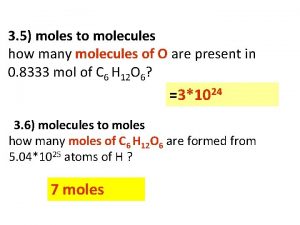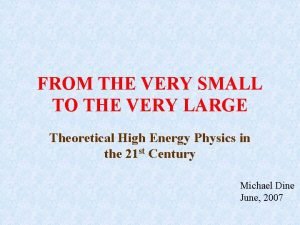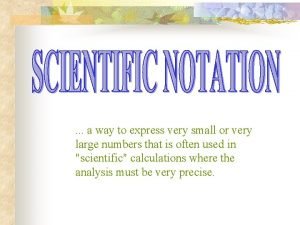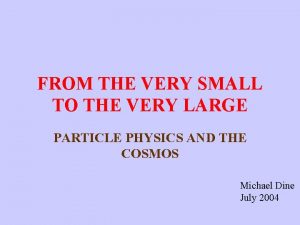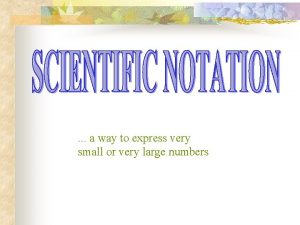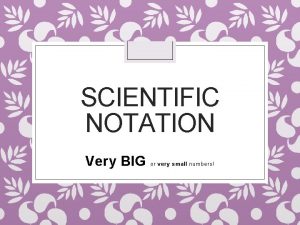CH 3 Many molecules are very small micromolecules



















- Slides: 19

CH 3

• Many molecules are very small (micromolecules) • Others are very large (macromolecules) • 4 types---organic molecules – Carbohydrates – Lipids – Proteins – Nucleic acids

Carbon Chemistry • Carbon is the Backbone of Biological Molecules (macromolecules) • All living organisms Are made up of chemicals based mostly on the element carbon Figure 4. 1 3

Carbon Chemistry • Organic chemistry is the study of carbon compounds • Carbon atoms can form diverse molecules by bonding to four other atoms • Carbon compounds range from simple molecules to complex ones • Carbon has four valence electrons and may form single, double, triple, or quadruple bonds 4

• The bonding versatility of carbon allows it to form many diverse molecules, including carbon skeletons Name and Comments (a) Methane Molecular Structural Formula Ball-and. Stick Model Space. Filling Model H CH 4 H C H H (b) Ethane C 2 H 6 (c) Ethene Figure 4. 3 A-C (ethylene) C 2 H 4 H H H C C H H 5

• The electron configuration of carbon gives it covalent compatibility with many different elements Hydrogen Oxygen Nitrogen Carbon (valence = 1) (valence = 2) (valence = 3) (valence = 4) H O N C Figure 4. 4 6

• Carbon may bond to itself forming carbon chains • Carbon chains form the skeletons of most organic molecules • Carbon chains vary in length and shape H H H C C H H Butane (b) Branching (c) Double bonds (d) Rings Figure 4. 5 A-D H H H C C H H H Ethane (a) Length H H H H H C C H H 1 -Butene H H H C C C H H C Cyclohexane H C C C H H Propane H H C C C H H isobutane H H H C C H H H 2 -Butene H H C C C Benzene 7

Hydrocarbons • Hydrocarbons are molecules consisting of only carbon and hydrogen • Hydrocarbons Are found in many organic molecules Fat droplets (stained red) Figure 4. 6 A, B (a) A fat molecule 100 µm (b) Mammalian adipose cells 8

Isomers • Isomers are molecules with the same molecular formula but different structures and properties • Three types of isomers are – Structural: isomers with differences in the actual structure of their carbon skeleton. Ex. Glucose and Fructose – Geometric (Stereoisomer): have same carbon skeleton but different in how they groups are attached to this skeleton – Enantiomers: Mirror images of each other 9

H H (a) Structural isomers H H H C C C H H H X H C H H H CO 2 H C C NH 2 H X X NH 2 H C H H C C CH 3 Figure 4. 7 A-C H (c) Enantiomers H X C (b) Geometric isomers H CH 3 10


• Enantiomers Are important in the pharmaceutical industry Figure 4. 8 L-Dopa D-Dopa (effective against Parkinson’s disease) (biologically inactive) 12

Carbon and the Molecular Diversity of Life Carbon Crash Course 13

Functional Groups • Functional groups are the parts of molecules involved in chemical reactions • They Are the chemically reactive groups of atoms within an organic molecule • Give organic molecules distinctive chemical properties Estradiol HO Female lion OH CH 3 O Figure 4. 9 OH CH 3 Male lion Testosterone 14

• Six functional groups are important in the chemistry of life – – – Hydroxyl Carbonyl Carboxyl Amino Sulfhydryl Phosphate 15

Some important functional groups of organic compounds FUNCTIONAL GROUP HYDROXYL CARBONYL O OH (may be written HO STRUCTURE Figure 4. 10 CARBOXYL C C OH ) In a hydroxyl group (— OH), a hydrogen atom is bonded to an oxygen atom, which in turn is bonded to the carbon skeleton of the organic molecule. (Do not confuse this functional group with the hydroxide ion, OH–. ) O The carbonyl group (CO) consists of a carbon atom joined to an oxygen atom by a double bond. When an oxygen atom is double -bonded to a carbon atom that is also bonded to a hydroxyl group, the entire assembly of atoms is called a carboxyl group (—COOH). 16

Some important functional groups of organic compounds NAME OF COMPOUNDS Alcohols (their specific names usually end in -ol) EXAMPLE H H H C C H H Ketones if the carbonyl group is within a carbon skeleton Aldehydes if the carbonyl group is at the end of the carbon skeleton H OH Ethanol, the alcohol present in alcoholic beverages H H C H H Acetone, the simplest ketone H Figure 4. 10 H O C H Carboxylic acids, or organic acids H H C C H H C H O C OH Acetic acid, which gives vinegar its sour taste O C H Propanal, an aldehyde 17

• Some important functional groups of organic compounds AMINO SULFHYDRYL H N H The amino group (—NH 2) consists of a nitrogen atom bonded to two hydrogen atoms and to the carbon skeleton. Figure 4. 10 PHOSPHATE O SH (may be written HS ) O P OH OH The sulfhydryl group consists of a sulfur atom bonded to an atom of hydrogen; resembles a hydroxyl group in shape. In a phosphate group, a phosphorus atom is bonded to four oxygen atoms; one oxygen is bonded to the carbon skeleton; two oxygens carry negative charges; abbreviated P. The phosphate group (—OPO 32–) is an ionized form of a phosphoric acid group (—OPO 3 H 2; note the two hydrogens). 18

19
 Antigentest åre
Antigentest åre Examples of micromolecules
Examples of micromolecules Micromolecules and macromolecules
Micromolecules and macromolecules Mikromolekul
Mikromolekul Used to express very large or very small numbers
Used to express very large or very small numbers Organic molecules vs inorganic molecules
Organic molecules vs inorganic molecules Very bad to very good scale
Very bad to very good scale Very little or very few
Very little or very few It is a very shallow skillet with very short sloping sides
It is a very shallow skillet with very short sloping sides Quantifiers for milk
Quantifiers for milk Small areas of white used to show the very brightest spots
Small areas of white used to show the very brightest spots Eris dwarf planet
Eris dwarf planet What is an atom made of
What is an atom made of List as many words
List as many words Unary many to many
Unary many to many Sqlbi many to many
Sqlbi many to many Er diagram
Er diagram Many buyers and sellers
Many buyers and sellers Contoh erd one to one
Contoh erd one to one Example of unary relationship
Example of unary relationship

